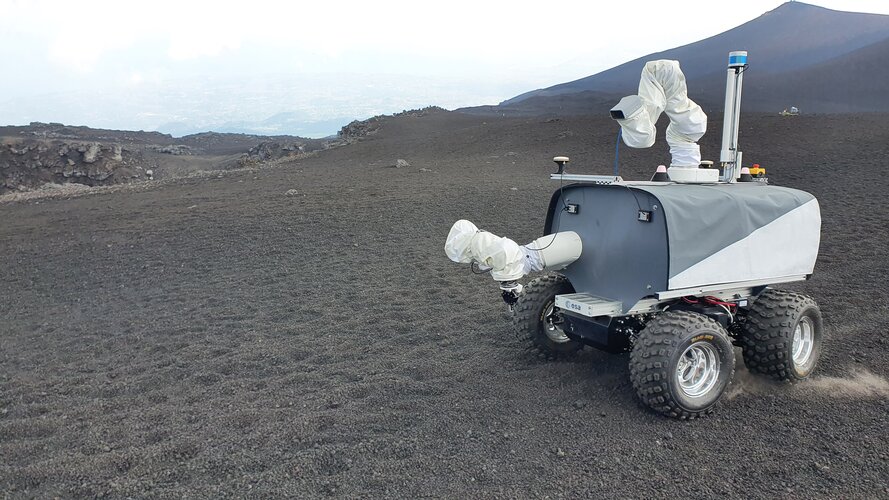This image comes to you from Mount Etna, Sicily, where a lunar analog study focusing on robotic exploration is currently unfolding.
The project - named the ARCHES Space-Analog Demonstration - is a multi-agency, multi-robot event brought to life by the German Aerospace Center DLR, and featuring significant ESA participation. ESA will be joining the project to run the latest and final part of the Analog-1 campaign, the completion of which will mark the culmination of one of the agency’s long-term research endeavours, dating back to 2008.
For four weeks spanning 12 June to 9 July, the project will explore the operations and technologies that enable a sample return mission on the lunar surface involving an astronaut on the lunar Gateway with a rover operations control room on Earth and scientific expertise on-hand at other control centres.
As part of the simulation, ESA astronaut Thomas Reiter will control a rover stationed 2600 m up on the slopes of Mt Etna from a room 23 km away in the nearby town of Catania. This distance simulates the sort of remote-control situations astronauts will encounter at the lunar Gateway.
Week three will be a highlight of the outing, with three live tests set to simulate both before and after the establishment of the Gateway, as well as how astronauts and rovers may in future work together on the lunar surface.
ESA’s 300 kg four-wheeled Interact rover, which is equipped with gripper and camera arms, as well as a stereo camera mast, will be one of the main stars of the show. Interact can deliver much more than images of the environment, however. Its state of the art controls incorporate force feedback that lets astronauts experience the planet’s surface in the same way the rover does - all the way down to the feel of the weight and cohesion of the rocks it touches.
This isn’t the rover’s first outing, but it has received several upgrades to help it weather outdoor use since it was controlled by ESA astronaut Luca Parmitano direct from the International Space Station in December 2019.
Autonomous robot networks like these are regarded as a key future technology, and in years to come will be vital to conducting research in harsh, vast environments, from the deep sea here on Earth all the way to the surfaces of the Moon and Mars.



 Image:
Lunar science stirring on Mount Etna
Image:
Lunar science stirring on Mount Etna